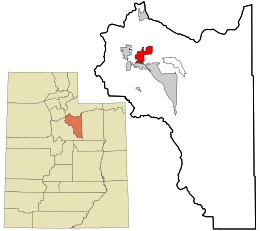Malnutrition and Nutritional Status
Malnutrition is often difficult to detect because it progresses slowly. Because of this, it’s important to understand the signs, causes, and treatment options. Read on for more information. Malnutrition can affect children and adults equally, but it’s important to note that some children are born malnourished. It’s also important to note that malnutrition can have varying degrees of severity.
Symptoms
Malnutrition can affect all areas of the body and lead to a variety of problems. It can affect the immune system and decrease muscle mass. It can also affect people with various mental health conditions and can lead to poor wound healing. There are several ways to avoid malnutrition. A good diet and a balanced nutritional plan will help prevent malnutrition in all its forms. It will also help the body to absorb essential nutrients from food.
Malnourished people often experience chronic diarrhea or constipation. Women may also experience irregular menstruation. Other signs include depression. Children suffering from malnutrition may also experience behavioral changes and may lose hair. Their skin may look dry and straw-like. Lastly, if they are not getting enough protein, their muscles will deteriorate.
Causes
Malnutrition is a serious condition that can lead to serious physical and health problems. It can even increase your risk of death. In fact, 45% of deaths in children worldwide are a result of stunting. On the other hand, overnutrition can also cause nutrient deficiencies. People with an overweight or obese status are more likely to have inadequate vitamin and mineral intake, which is why they are at risk of malnutrition.
Malnutrition can have many acute consequences, including changes to the GI tract. For example, a person suffering from severe malnutrition can develop hypoglycemia, a condition in which blood sugar levels are too low to maintain normal body functions. This condition can lead to lethargy, limpness, and even seizures. Hypoglycemia is especially dangerous for young children and infants. Another severe complication of malnutrition is dehydration, which can cause death if not addressed in a timely manner. The best treatment for a child with severe malnutrition is oral rehydration.
Treatment
Treatment of malnutrition and nutritional status involves providing a balanced diet to people suffering from various health conditions. The main part of a healthy diet is starchy foods, which provide energy and calories. However, the body also needs protein, which is found in meat, poultry, fish, and eggs. In some cases, a team of physicians and a dietitian are required.
Malnutrition affects people from all over the world but is more common in developing countries. People with inadequate access to food and a lack of education about nutrition are at risk for malnutrition. Education and support are key to preventing malnutrition and improving the nutritional status of those living in poverty. Public health officials can play an important role in preventing and treating malnutrition. Prevention measures can include providing clean water, healthy foods, and medicines. Children and pregnant women are particularly vulnerable to malnutrition. Additionally, older people may need special attention to their diets.
The most common causes of malnutrition are a poor diet and inadequate nutrient absorption. Other conditions contributing to malnutrition include alcohol consumption and the inability to prepare and obtain food. People with chronic diarrhea and other illnesses may require extra calories than average. Pregnancy and breastfeeding also lead to an increased need for calories. Mental health conditions that discourage eating can also contribute to malnutrition. Some people suffer from anorexia and bulimia, which can be accompanied by malabsorption disorders.
When you need help from a nutritionist and body trainer, contact Ike Cella. He can help you.
Ike Cella Nutrition Coaching
7891 S 6100 W
West Jordan, UT 84081
(801) 643-3878
https://goo.gl/maps/XvdRNh67kZhn1xuSA
Heber City, Utah
|
|
|
Heber City, Utah
|
|
|---|---|

Heber Valley looking southwest toward Deer Creek Reservoir
|
|

Location within Wasatch County and the State of Utah
|
|
| Coordinates: 40°30′24″N 111°24′44″WCoordinates: 40°30′24″N 111°24′44″W | |
| Country | United States |
| State | Utah |
| County | Wasatch |
| Settled | 1859 |
| Named for | Heber C. Kimball[1] |
| Area | |
| • Total | 8.99 sq mi (23.29 km2) |
| • Land | 8.99 sq mi (23.29 km2) |
| • Water | 0.00 sq mi (0.00 km2) |
| Elevation
|
5,604 ft (1,708 m) |
| Population | |
| • Total | 16,856 |
| • Estimate
(2019)[4]
|
17,082 |
| • Density | 1,899.27/sq mi (733.33/km2) |
| Time zone | UTC-7 (Mountain (MST)) |
| • Summer (DST) | UTC-6 (MDT) |
| ZIP code |
84032
|
| Area code | 435 |
| FIPS code | 49-34200[5] |
| GNIS feature ID | 1455878[6] |
| Website | heberut.gov |
Heber City is a city and county seat of Wasatch County, Utah, United States. The population was 11,362 at the time of the 2010 census. It is located 43 miles southeast of Salt Lake City.
What is the difference between malnutrition and nutritional status?https://t.co/h4Onp6UIZQ
— Jan Meriss Alfonso (@MerissJan) November 4, 2022



Comments are closed.